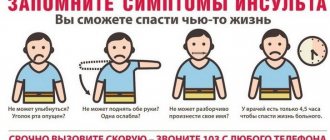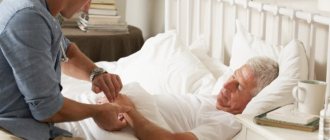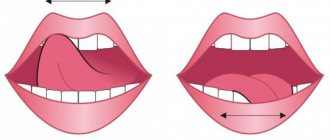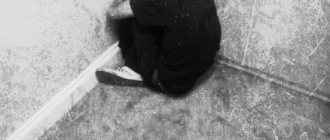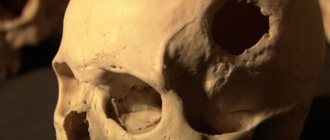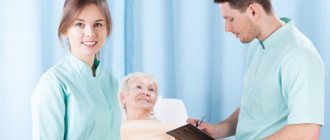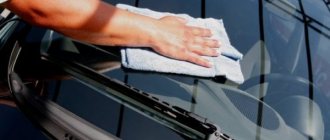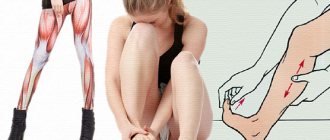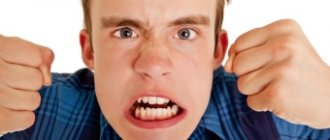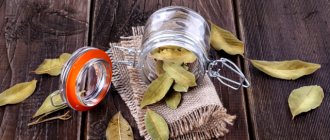A stroke is an acute disturbance of blood circulation in the brain, which leads to damage and death of nerve cells.
Against this background, the body loses one of the functions for which those dead cells were responsible.
This is manifested by such serious complications:
- Loss of speech.
- Memory loss.
- Disorders of thinking and psyche.
- Right- or left-sided paresis or paralysis.
- Complete immobility of the body.
Treatment after a stroke is a very labor-intensive and highly individual process . As a rule, by the time they are discharged from the hospital, most people who have suffered a stroke are still unable to care for themselves, sit down, stand up and walk. Along with drug treatment, it is imperative to carry out rehabilitation therapy and patient education. Rehabilitation therapy, in turn, involves massage and physical training.
Exercise machine for arms and legs after a stroke
During the recovery period you need to try:
- Restore motor function.
- Relieve muscle hypertonicity.
- Strengthen weakened muscle tissue.
- Improve psychological state.
The best solution in such a situation is simulators. They not only activate forgotten abilities, but also prevent the development of muscle atrophy and improve blood circulation. They should begin to be used already in a hospital bed, when the patient is still in a supine position.
It is better to carry out the first training under the supervision of a specialist, so that the restoration of the muscular system fits organically into the restoration of other organ systems. Rehabilitation should begin in the hospital and then actively continue at home, when the patient already clearly understands how to correctly dose the load on the limbs using exercise equipment.
Among the variety of mechanotherapy devices that have proven themselves well in the fight against the consequences of stroke are “ Bud ” and “ Shagonog 409 ”.
The Shagonog 409 device helps to develop and restore legs. This instrument simulates walking. It is used for bedridden patients, placed under the foot. During the day, you can regularly, for training purposes, load the paralyzed leg. This means that when, over time, the brain makes a volitional decision to raise the patient to his feet, the musculoskeletal system will be ready for this! This simulator effectively develops muscles and joints without the conscious participation of the patient. “Shagonog” is not a strength trainer; it passively develops the musculoskeletal system.
Shagonog 409
"Bud" is an effective device for developing fingers. Any healthy person, without attaching any importance to it, constantly moves his joints, but a person who has suffered a stroke is deprived of this opportunity. His fingers become like wood, and his joints lose flexibility. If time has not yet been lost and irreversible changes have not yet occurred in the hand, then “Bud” will help mechanically develop joints and fingers, sending the necessary impulses to the brain.
The device is adjusted individually to the capabilities of each patient. When the “Bud” works, the nerve endings are stimulated and this can lead to the return of sensitivity in the hand and its full functionality!
Bud
Both of these exercise machines make life much easier for caregivers because they do not require the patient to change their position.
If the patient can already get up, then walking simulators . They are aimed at developing the feet, legs, thighs and buttocks. There are many options for such exercise machines, but they are all united by a design principle: a system of paired pulleys, a pedestal for the feet and holders for the hands. One type of such exercise equipment is an exercise bike. Even if your muscles are inactive, you can still get a good workout on such a simulator.
When to start training
The doctor prescribes the necessary exercises and training on simulators depending on the patient’s condition and how much the stroke affected his physical and emotional health. It is not recommended to perform any actions without the knowledge of the doctor; this can significantly worsen your health.
If after a stroke the victim does not fall into a coma, then after a couple of days you can perform breathing exercises (under the supervision of a specialist) to prevent congestion in the lungs. After a week, the doctor may already prescribe light exercise in combination with physiotherapeutic treatment (for example, magnetotherapy and acupuncture) and massage.
During the rehabilitation period, all activities are aimed at restoring motor function, relieving muscle hypertonicity and strengthening them, and improving the psycho-emotional state. The most suitable solution is to use various simulators. With their help, you can significantly improve blood circulation and prevent muscle atrophy. The main advantage of such devices is that many models are suitable for paralyzed patients. The duration of rehabilitation measures is individual and determined by a specialist.
How to restore a hand after a stroke
The functionality of a hand after a stroke can be fully restored, but this requires a lot of effort! To restore hand movement, you need to eliminate the following problems:
- Muscle spasticity.
- Paralysis.
- Limitation of joint mobility.
- Atrophy.
- Circulatory disorders.
In the early stages of recovery, mechanotherapy devices, which are equipped in most rehabilitation centers, are highly recommended for use. These simulators will help develop your limbs, but systematic gymnastics at home can give your muscles strength and endurance.
Motomed Viva 2
View gallery
The simulator is used to exert loads on the lower and upper limbs. Passive activation of mobility is achieved by powering the device with an electric motor. Additional stimulation of atrophied muscles is carried out by attaching electrodes to the body, delivering appropriate impulses to the tissue. Small current discharges are synchronized by the device’s on-board computer with the pedaling speed.
The Stroke Recovery Trainer is equipped with a convenient display. The presence of an electronic control system allows the patient to customize the operation of the device to individual needs. Regular rotation of pedals on the device ensures progressive growth of muscle mass, as well as providing feasible loads on the organs of the cardiovascular system.
Exercises while standing
View gallery
Take an upright position with your feet shoulder-width apart. Your arms should hang freely along your body. Then smoothly lift your upper limbs and stretch towards the ceiling, taking a deep breath. Describe a wide circle with your hands and return to the starting position. Perform 5-6 repetitions at a leisurely pace.
Stand up, place your palms on your pelvic area, and spread your legs apart. Slowly turn your body to the left while spreading your arms to your sides. Carry out the movement while inhaling. Then exhale smoothly and move to the starting position. Perform 7-8 repetitions on each side.
Forecast
On average, more than 60% of stroke patients experience complications and paralysis of the limbs, most of them being pensioners or those who suffer from a recurrent attack. Recovery occurs in 70% of cases, but provided that the patient undergoes a full course of rehabilitation for six months or even a year.
To avoid such consequences, it is necessary to diagnose the disease in time and begin treatment. Indeed, in most cases, a stroke begins due to late consultation with a doctor, ignoring symptoms and lack of treatment for chronic diseases.
Under conditions of correct implementation of restorative therapy methods, the prognosis for recovery is favorable. Before starting, you need to consult with a doctor who will discuss all the necessary points, since the disease occurs individually in each patient. The consequences depend on the genesis and manifestations of the stroke.
Exercises while lying down
View gallery
Doctors recommend that bedridden patients perform rotational movements with their eyes in different directions. At the end of the workout, perform stroking movements in the eyelid area. Finally, do a series of leisurely blinks.
A good solution for patients with extreme limited mobility is head rotation. Move your gaze around, up and down. Tilt your head at a leisurely pace, avoiding sudden movements. During one workout, perform 5-6 movements on each side.
Taking a lying position on your back, grab the headboard of the bed with your palms. Do a series of small chest pull-ups, straightening your shoulders. Keep your lower limbs relaxed. Perform up to 5 pull-ups at a leisurely pace, rest for a few minutes and repeat the procedure.
Alter Step
View gallery
The Alter Step rehabilitation simulator looks like an inclined staircase, complemented by a number of beams. The position of the functional elements of the device is adjustable in height, based on the individual needs of the stroke patient. Horizontal bars provide reliable support for the upper limbs while moving back and forth on an inclined platform. The steps of the exercise machine have a coating that eliminates the possibility of the patient’s feet slipping.
Classes on a step platform enable a person to eliminate the psychological barrier that arises after prolonged adherence to bed rest. The patient is able to train on the device without outside help, putting feasible loads on the lower and upper limbs, as well as the muscles of the shoulder girdle. The design includes a ramp for wheelchair users, which makes it possible to stand up in the simulator independently and proceed to exercise.
In addition to restoring muscle tone and returning normal mobility to the joints of the upper and lower extremities, the rehabilitation simulator provides high-quality cardio exercise. The result of regular exercise is strengthening the whole body, saturating the muscles with oxygen, and returning healthy blood circulation.
Passive gymnastics for limbs
View gallery
Performing passive gymnastic procedures seems appropriate when a person is temporarily unable to move and needs outside help. Doctors advise doing the following exercises to recover after a stroke:
- Suspend the upper limb with limited mobility in a sling. Rotate, move laterally, bend and straighten your arm every day for half an hour. As you practice, take short breaks of 3-4 minutes.
- Sew the elastic into a ring shape. Place the device on your limbs. Perform fly-outs and fly-ups, overcoming the loads created by the device.
- In order to improve muscle tone of the upper extremities and develop fine motor skills of finger movements, train using gymnastic balls. Using a Rubik's cube gives good results. Similar problems are solved by tying and untying shoelaces, laying out playing cards, and modeling from plasticine.
Tips for relatives
A person who feels like a burden very rarely achieves good results. The patient who understands everything but cannot say anything feels helpless.
Therefore, you should follow simple rules:
You should not talk to a person as if he is doomed. You need to have a calm conversation with him, carefully observe the reaction and all changes. The patient should not communicate with aggressive or indifferent people. He should be surrounded by close and loving people. It is recommended to turn on your favorite music, encouraging the patient to sing along. Talk and listen
Only if a person feels the importance of what is said for others will he try to speak. Don’t be too tiring: “The slower you go, the further you will go”
These recommendations will help you quickly overcome difficulties and return a person to normal life.

